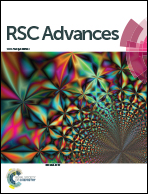Influence of ceramic particles as additive on the mechanical response and reactive properties of Al/PTFE reactive composites
Abstract
To investigate the influence of SiC and Al2O3 as additives on the mechanical response and reactive properties of Al/PTFE (aluminum/polytetrafluoroethylene) reactive composites, Al/SiC/PTFE and Al/Al2O3/PTFE samples with different component ratios were prepared for quasi-static compression and drop-weight tests. Al/Al2O3/PTFE samples with different particle sizes were prepared for simultaneous thermal analysis experiments. The stress–strain data, characteristic drop height and thermogravimetry-differential scanning calorimetry (TG-DSC) curves of the composites were recorded. The results show that the addition of SiC and Al2O3 significantly enhance the strength of Al/PTFE. The enhancing effect of SiC on the composite strength was stronger than that of Al2O3. The addition of SiC and Al2O3 contribute toward reducing the sensitivity of the composites, where the reducing effect of Al2O3 on Al/PTFE sensitivity was weaker than that of SiC. Nanoscale Al2O3 reacts with PTFE to form AlF3, and the reaction heat decreases dramatically with an increase in the Al2O3 particle size. The addition of nanoscale Al2O3 improves the reaction heat and energy density of the composites.



 Please wait while we load your content...
Please wait while we load your content...